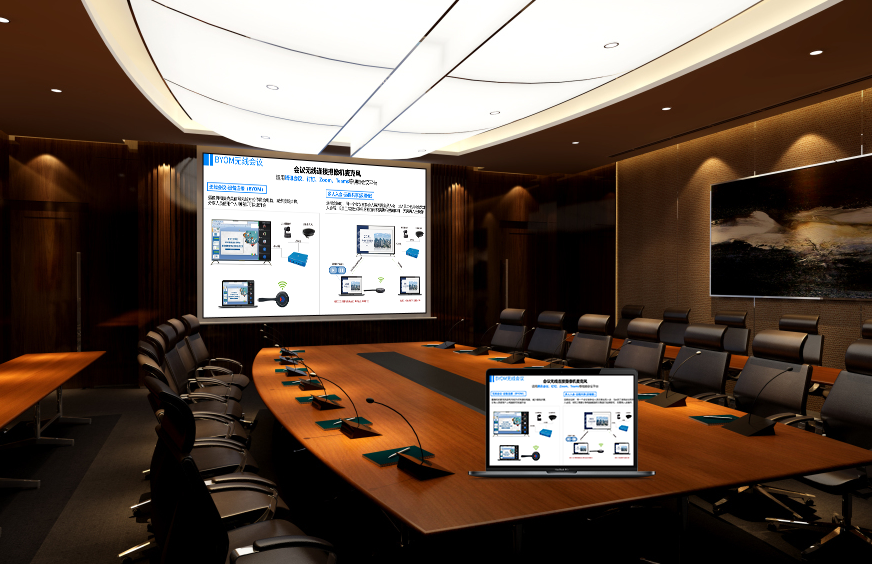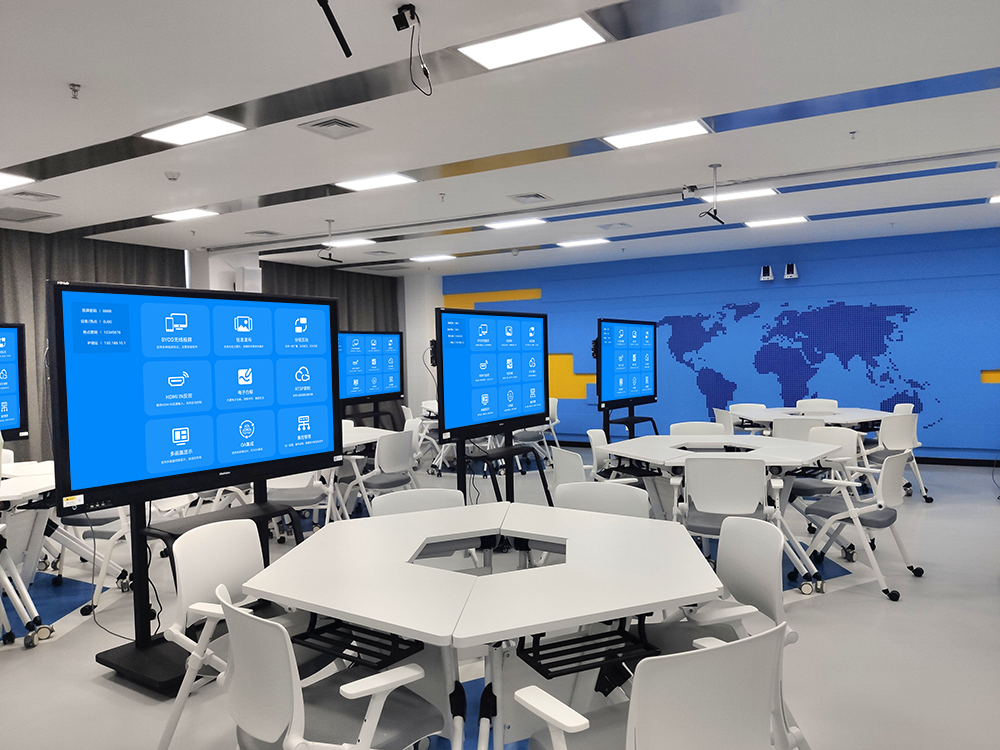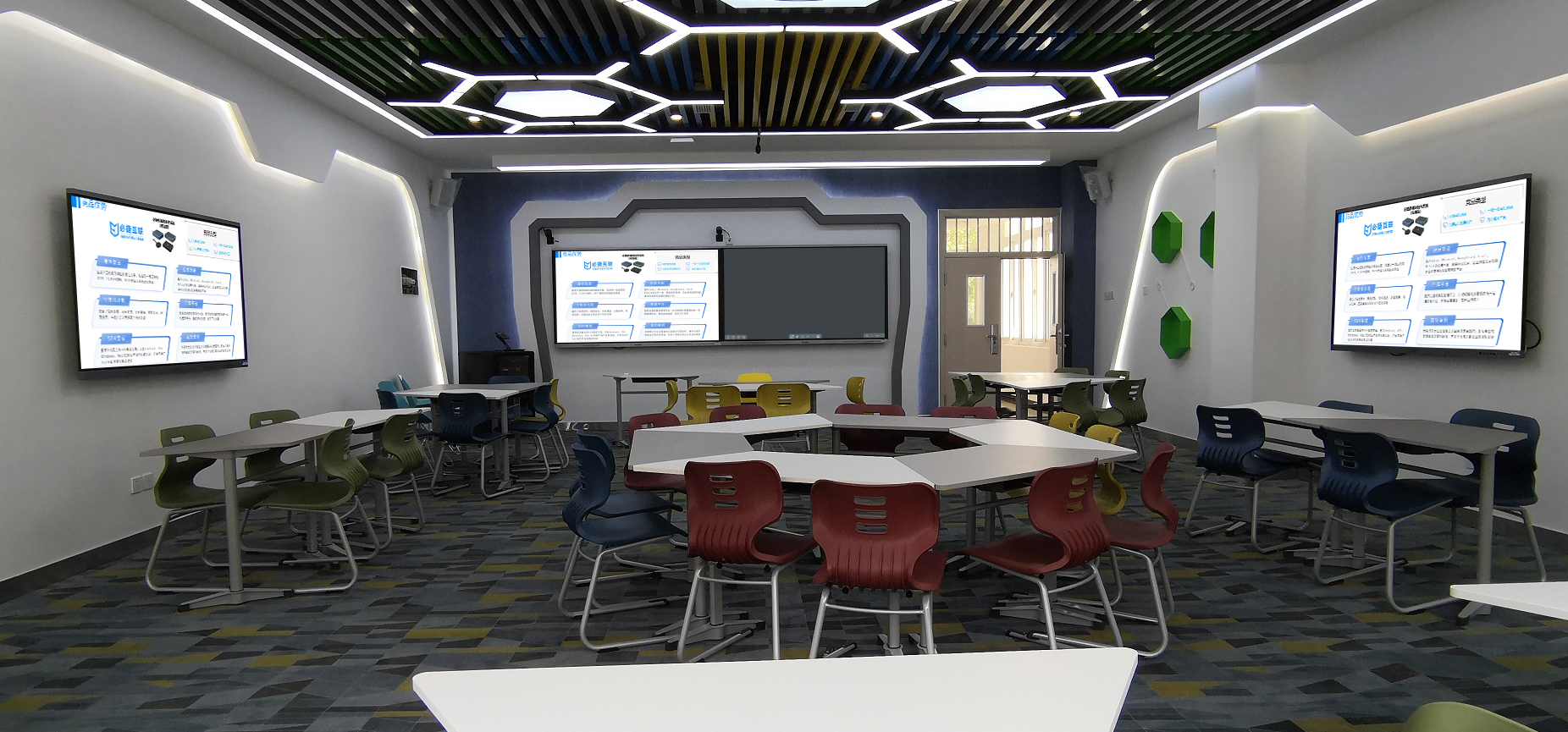Wireless Screen Mirroring: Bridging Device Gaps for Seamless Interaction
In the digital age, wireless screen mirroring technology is transforming how we interact with and share information across various settings like work, education, and entertainment. It acts as a crucial bridge connecting different devices, freeing content from the constraints of cables and allowing it to flow effortlessly between phones, tablets, computers, and large displays.
I. Universal Protocol Compatibility: Adapting to Diverse Device Ecosystems
- Comprehensive Protocol Support: This technology supports almost all mainstream wireless screen mirroring protocols on the market, including AirPlay, Miracast, WiDi, DLNA, and Google Cast. This means whether you’re using Apple devices like iPhones, iPads, or MacBooks, Android devices such as Samsung or Huawei phones and tablets, or Windows PCs from Lenovo or Dell, you can easily connect to a screen mirroring device. Imagine a cross-department meeting: a design colleague can instantly mirror a creative proposal from their MacBook, while a marketing colleague shares research data from their Android phone. Thanks to universal protocol compatibility, there’s no need for complicated setup, significantly boosting meeting preparation efficiency.
- Revitalizing Older Devices: Even older TVs and projectors without native screen mirroring capabilities can join the wireless mirroring network with specific accessories. This not only avoids the high cost of device upgrades but also maximizes the remaining value of existing equipment. For example, an old projector in a school can be connected with the right accessory, allowing teachers to wirelessly mirror lesson plans from their computers, keeping teaching equipment up-to-date.

II. High-Definition Visuals and Low-Latency Performance
- 4K Ultra HD Transmission: Utilizing advanced video encoding and decoding, this technology ensures stable transmission of 4K ultra-high-definition visuals. Whether displaying intricate architectural designs, playing breathtaking 4K movies, or presenting high-resolution medical images, every detail and color is accurately reproduced, providing an immersive visual experience. In a film production company’s internal review, directors and production teams can view 4K film footage on a large screen via wireless mirroring, clearly seeing skin textures and lighting changes, aiding in quality control.
- Millisecond-Level Low Latency: By optimizing wireless transmission paths and intelligently adjusting network channels, screen mirroring latency is kept to an extremely low level, achieving millisecond-level response. In gaming scenarios, when players mirror mobile competitive games, the screen display syncs almost instantly to the large screen. Skill execution and movement are fluid and lag-free, allowing players to fully enjoy the thrill of big-screen gaming. For remote online teaching, low latency ensures high synchronization between the teacher’s actions and the student’s display, making interactive Q&A smoother and more natural.
III. Rich Interactive Features for Efficient Collaboration and Communication
- Reverse Control Operation: A unique reverse control function allows users to directly operate the mirrored source device from the large screen. In a meeting room, a presenter can navigate PPT slides, edit documents, or operate software on their mirrored computer directly from the large screen, eliminating the need to constantly return to their computer. This makes presentations seamless and cohesive. In a training session, an instructor can use reverse control on the large screen to view and guide a student’s learning progress and operational issues on their mirrored tablet, making teaching interactions more targeted.
- Real-time Annotation and Collaboration: This feature supports real-time annotations, markups, and drawing on mirrored content. During a team brainstorming session, members can use different colored pens to highlight key points, add notes, and suggest revisions on mirrored documents, images, and charts. These annotations sync in real-time to all participating devices, facilitating team communication and collaboration and accelerating plan refinement and decision-making. In a brainstorming meeting, everyone can make real-time annotations on a mirrored mind map, visualizing the sparks of ideas.
- Multi-Screen Linkage and Collaboration: Allows multiple devices to mirror simultaneously and interact collaboratively across screens. In a group discussion, members can mirror their individual materials and ideas to their dedicated group screens. Then, group discussion outcomes can be pushed to the main screen for consolidated display and comparative analysis. In school project-based learning, different groups can use multi-screen linkage to showcase their research findings, fostering inter-group communication and learning, and cultivating students’ teamwork and communication skills.

IV. User-Friendly Design for Easy Setup
- Simplified Connection Process: The connection process is incredibly simple. Users can quickly connect their devices to the screen mirroring receiver through various methods, including QR code scanning, entering a projection code, or one-click device search. At a family gathering, an elder wanting to share old photos from their phone to the TV can easily do so by scanning a QR code, without complex setup steps, truly achieving a “zero learning curve.”
- One-Click Screen Mirroring: Phones, tablets, and computers are all equipped with a convenient one-click screen mirroring button. In an office setting, when an employee needs to urgently present important data or a proposal to the team, a single tap on the mirroring button on their device instantly displays the content on the conference room’s large screen. This captures fleeting inspiration and communication opportunities, significantly boosting work efficiency.
V. Stable and Reliable Performance in Complex Network Environments
- Strong Anti-Interference Capability: Optimized for complex network environments, this product boasts excellent anti-interference performance. In crowded offices, school classrooms, or shopping malls with abundant wireless signals, the wireless screen mirroring product can intelligently identify and avoid interference sources through smart algorithms, selecting the optimal network channel for data transmission. This ensures stable and smooth mirroring without stuttering, frame drops, or disconnections due to network interference.
- Automatic Reconnection Mechanism: In case of network interruption or connection abnormalities, the product’s built-in intelligent detection system quickly responds and automatically attempts to reconnect without requiring manual intervention. During long online meetings or live teaching sessions, even brief network fluctuations will see the mirroring automatically resume connection within a short period, ensuring the continuity of meetings and lessons and preventing wasted time and communication breakdowns due to connection issues.

VI. Broad Scene Application to Meet Diverse Needs
- Office Collaboration Scenarios: In daily corporate work, wireless screen mirroring facilitates efficient team collaboration. From presenting proposals at project kick-off meetings to reporting data at departmental weekly meetings and sharing ideas during brainstorming, employees can quickly mirror content from their devices. Combined with features like reverse control and real-time annotation, this makes meeting discussions more in-depth and decisions more efficient. For remote work teams, wireless screen mirroring breaks down spatial barriers, providing a consistent collaboration experience with the office, enhancing overall work efficiency.
- Education and Teaching Scenarios: This technology brings a revolutionary change to the education industry. Teachers can wirelessly mirror rich educational resources from their phones and computers—such as lesson plans, videos, and interactive software—to large screens, making teaching content more vivid and engaging. Students can also mirror their learning outcomes and group assignments, enhancing classroom interaction and participation. In group-based inquiry learning, multi-screen linkage promotes communication and cooperation among students, cultivating their independent learning and teamwork skills, and improving teaching quality and learning outcomes.
- Home Entertainment Scenarios: Wireless screen mirroring enriches home entertainment. Families can mirror movies, TV shows, music, and games from their phones and tablets to the TV, enjoying a stunning large-screen audio-visual experience. During weekend family movie nights, wirelessly mirroring an HD movie from a phone to the TV, coupled with a home theater sound system, creates an immersive viewing atmosphere. In parent-child interactions, children can mirror educational games from their tablets to the big screen, playing with parents and strengthening family bonds.
